Finding time to prepare home-cooked meals is a challenge for many families, which is why I'm excited to share my meal planning ideas and free templates. Meal planning makes mealtime less hectic - it brings a sense of calm to know exactly what we're making and allows us to have the groceries ready in advance.
When I lived alone, I often dined out or got takeout, enjoying the convenience. But after getting married, welcoming a baby, and working mostly from home, cooking for my family has become a daily task. Preparing meals that suits everyone’s tastes, while managing our toddler's allergies to dairy and eggs is no small feat. Despite the challenges, cooking and eating at home saves money and feels healthier.
Read on for my easy meal planning ideas, and don't forget to download my free templates! Whether you’re new to meal planning or looking for fresh inspiration, I hope you find this guide helpful.
1. Simplify your meal plan
a. Create Lists of Your Favorite Dishes
Rotate between them, gradually mastering each dish over time. The goal is to have enough recipes in your rotation so you don’t get bored eating at home. Breakfast can be particularly challenging for me because I’m not a morning person, and many breakfast options are high in carbs, leading to sugar spikes and crashes that affect my mood and energy. So, I rotate between a few high-protein items: eggs (mini quiche, omelet, boiled, poached, etc.), avocado, high-fat yogurt or kefir (6% or more), cottage cheese, and leftovers. My son is allergic to eggs, but I still eat them for breakfast because they are an excellent source of protein; two eggs will keep me full until lunch. If I’m eating toast, I will pair it with high-protein items like avocado and eggs, to lower the sugar and insulin spike—a tip I learned from the book "Glucose Revolution" by Jessie Inchauspe. Her Instagram, Glucose Goddess, also offers great information.
- Breakfast: Create a list of 7 or more high-protein breakfast foods your family enjoys and rotate them throughout the week. Ensure that you have your favorite breakfast items in your fridge to start your day right.
- Dinner: Compile a list of 14 or more easy dinner recipes that your family loves, along with special dishes for weekends.
- Lunch: Can be leftovers from dinner or quick and easy meals like sandwiches, Asian dumplings, pelmeni (Eastern European meat-filled dumplings).
b. Establish Theme Nights
Create a fun routine with theme nights like Meatless Monday, Taco Tuesday, Stir-Fry Friday to add excitement to your meals.
c. Cook Once, Eat Twice
Double recipes for dinners that keep well in the fridge or freezer to have leftovers for lunch or another dinner . This saves time and ensures you always have something ready to eat.
d. Freezer Meals
Dedicate one weekend a month to preparing and freezing meals. This can be a lifesaver on particularly busy nights.
e. Meal Prep Kits
Consider using meal prep kits or delivery services for some of your meals to enjoy variety and reduce prep time.f. Seasonal Meal Planning: To make meal planning even simpler, I create a 4-week seasonal meal plan and repeat it for three months. This approach saves time, lets me refine recipes, and keeps meals fresh without the boredom of repetition.
f. Seasonal Meal Planning
To make meal planning even simpler, I create a 4-week seasonal meal plan and repeat it for three months. This approach saves time, lets me refine recipes, and keeps meals fresh without the boredom of repetition.

2. Set realistic goals
Examine your weekly schedule and identify how many dinners you can realistically cook that week, considering work and home activities. Choose easy dinner recipes for weekdays that reheat well. Soups, stews, curries, and casseroles are excellent for batch cooking and tastes even better the next day.
In the beginning, I overestimated my energy and planned a different dinner for every night. After two weeks, I was exhausted and needed two weeks to recuperate. Now I usually plan to cook 3-4 dinners a week, with leftovers or prepared meals (from grocery stores and restaurants) filling in the gaps.
3. Involve your family
Involving your family in meal planning ensures everyone enjoys the meals. My husband doesn’t like to think about what to eat but will give input when I present a draft menu, which we then revise together. My son is too young to participate, but I plan to involve him in the future. Let me know in the comments if you involve your partner and children in meal planning and how that goes.
4. Meal selection and preparation
Before selecting your meals for the week, check your pantry, fridge, and freezer. Note any perishable items and incorporate them into your meal plan early in the week. Search for recipes that feature these ingredients. Do most of your grocery shopping on the weekend, with a quick mid-week trip for any missing items.Use weekends to prepare ahead. Marinating meats in advance can enhance their flavor, so get a head start on weeknight dinners by preparing them on the weekend. Soups and curries taste great reheated, so you can prepare them ahead of time. I also like to make and freeze some of my toddler's favorite meals for lunches and as backup for nights when he doesn’t want to eat what we’re having.
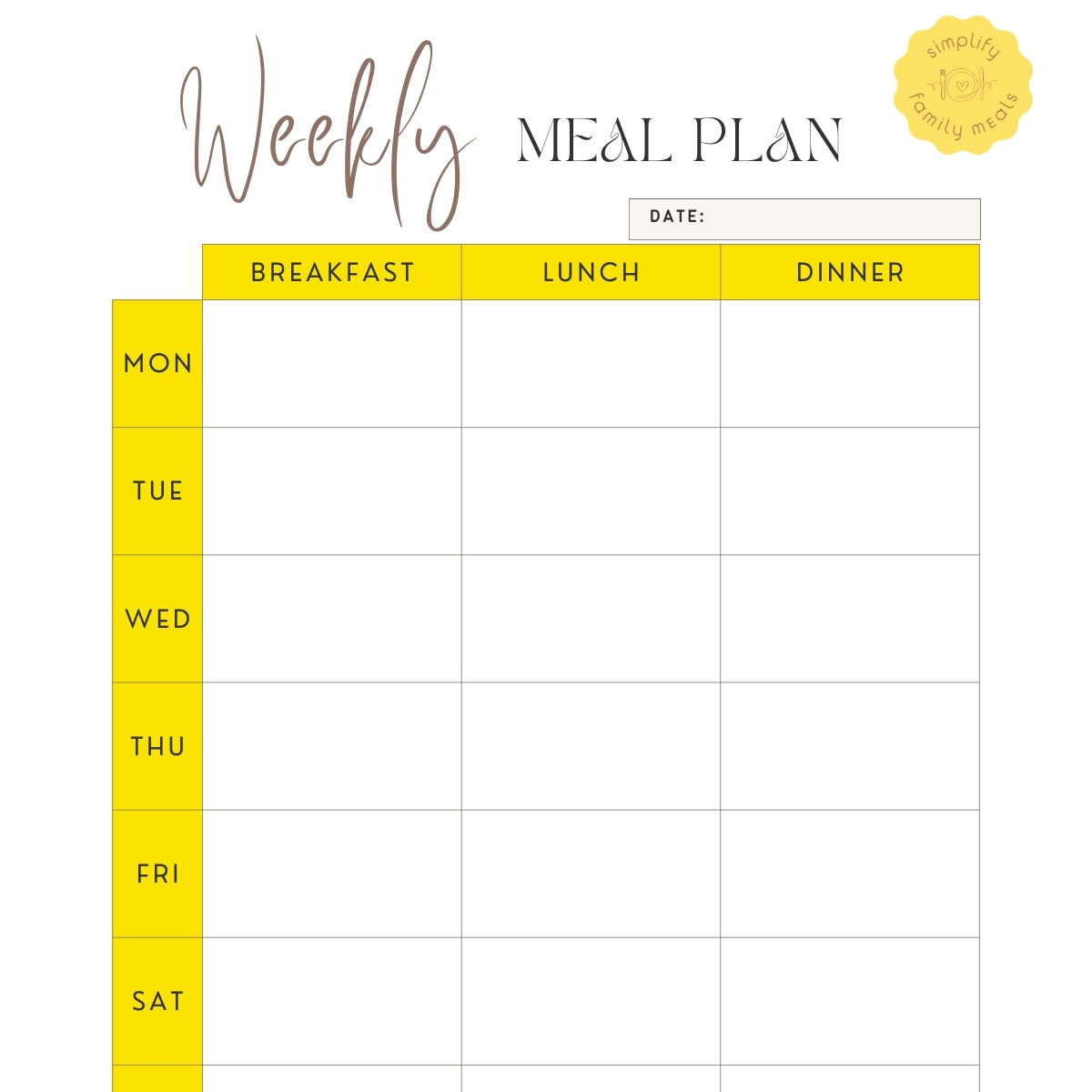
5. Reflect and adjust
At the end of each week, reflect on your meal plan and make adjustments for the following week.
- What worked well? What could be improved?
- How many meals can you realistically cook in a week?
- Which meals did your family enjoy and which meals did they not care for that much? Update your list of favorites accordingly.
I hope you find my meal planning ideas helpful. To help you get started, I’ve created three free meal planning templates: one for listing your favorite recipes, another for planning your weekly meals, and a third for organizing your grocery list. Download these free templates to make your meal planning easier.
Leave a comment below to share your thoughts and add your own tips for meal planning.

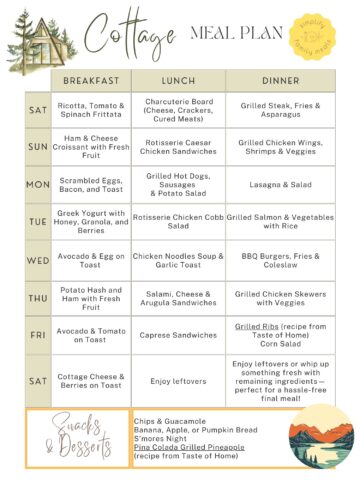
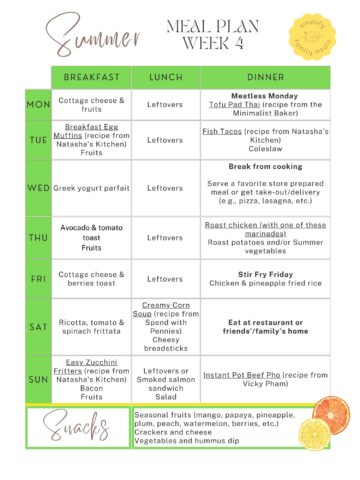
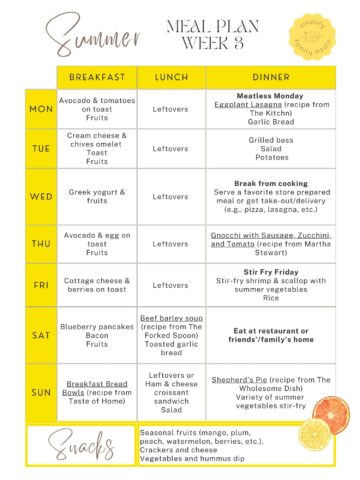
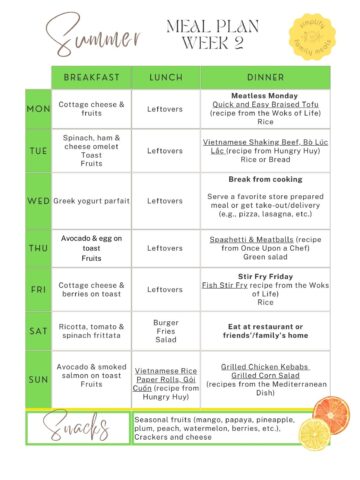
Comments
No Comments